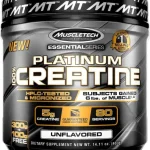Table of Contents:
- Introduction
Resistance Training: Unveiling its Impact on Metabolic Flexibility
High-Intensity Interval Training (HIIT): Maximizing Metabolic Flexibility Gains
Other Forms of Physical Activity: Their Contributions to Metabolic Flexibility
- Conclusion Enhancing Metabolic Flexibility for Optimal Health
- References
- FAQs
1. Introduction:
Metabolic flexibility refers to the body’s ability to adapt its fuel utilization based on the prevailing metabolic demands. It plays a crucial role in overall health, energy metabolism, and disease prevention. Exercise is a powerful tool that can significantly influence metabolic flexibility. However, not all types of exercise have the same impact. In this comprehensive blog post, we will delve into the various types of exercise and their specific effects on metabolic flexibility. Backed by reputable sources, we will explore how aerobic exercise, resistance training, high-intensity interval training (HIIT), and other forms of physical activity can enhance metabolic flexibility and contribute to a healthier lifestyle.
2. The Role of Metabolic Flexibility in Overall Health
2.1 Understanding Metabolic Flexibility and its Significance
Metabolic flexibility is the ability of the body to switch between different fuel sources (carbohydrates, fats, and ketones) to meet energy demands. It enables efficient energy utilization and supports overall metabolic health. When metabolic flexibility is impaired, the body may struggle to adapt to changing energy needs, leading to metabolic disorders such as insulin resistance, obesity, and type 2 diabetes. By improving metabolic flexibility, individuals can enhance their metabolic health and reduce the risk of chronic diseases.[1]
2.2 Link between Metabolic Flexibility and Chronic Diseases
Research has established a strong connection between impaired metabolic flexibility and various chronic diseases. Reduced metabolic flexibility is commonly observed in individuals with obesity, type 2 diabetes, cardiovascular disease, and non-alcoholic fatty liver disease. Impaired flexibility can result in excessive fat storage, insulin resistance, and inefficient energy utilization. Conversely, individuals with higher metabolic flexibility exhibit better glucose control, improved lipid profiles, and reduced risk of metabolic disorders. Therefore, enhancing metabolic flexibility through exercise becomes a vital strategy for disease prevention and overall health improvement.[2]

3. Aerobic Exercise: Boosting Metabolic Flexibility
3.1 Aerobic Exercise: An Overview
Aerobic exercise refers to activities that increase heart rate and respiration, such as running, swimming, or cycling. This type of exercise primarily relies on oxygen for energy production and engages large muscle groups over an extended period. Aerobic exercise is known to have numerous health benefits, including improvements in cardiovascular fitness, weight management, and, importantly, metabolic flexibility.

3.2 Effects of Aerobic Exercise on Metabolic Flexibility
Aerobic exercise positively influences metabolic flexibility by enhancing mitochondrial function, which is responsible for energy production within cells. Regular aerobic exercise promotes mitochondrial biogenesis, increasing the number and efficiency of mitochondria. This adaptation enables improved oxidative capacity and enhances the utilization of both carbohydrates and fats as fuel sources during exercise and rest. Consequently, individuals who engage in regular aerobic exercise exhibit improved metabolic flexibility, better glucose regulation, and enhanced lipid metabolism.[3]
3 .3 Mechanisms Behind Aerobic Exercise-Induced Metabolic Flexibility
The beneficial effects of aerobic exercise on metabolic flexibility stem from multiple underlying mechanisms. Firstly, aerobic exercise stimulates the activation of key metabolic regulators, such as AMP-activated protein kinase (AMPK), which promotes the use of fatty acids for energy. Secondly, aerobic exercise improves insulin sensitivity, allowing for efficient glucose uptake by muscles and reducing the risk of insulin resistance. Thirdly, aerobic exercise increases the expression of proteins involved in fatty acid transport and oxidation, facilitating the utilization of fats as an energy source. These mechanisms collectively contribute to the enhanced metabolic flexibility observed in individuals who regularly engage in aerobic exercise.[4]
3.4 Recommended Aerobic Exercise Strategies for Optimal Results
To optimize metabolic flexibility through aerobic exercise, it is recommended to engage in moderate-intensity aerobic activities for at least 150 minutes per week or vigorous-intensity activities for 75 minutes per week. Examples include brisk walking, jogging, swimming, or cycling. Additionally, incorporating interval training within aerobic workouts can further enhance metabolic flexibility. By alternating between high-intensity bursts and active recovery periods, interval training stimulates physiological adaptations that promote metabolic flexibility. It is important to gradually increase exercise intensity and duration while considering individual fitness levels and any underlying health conditions.[5]

4. Resistance Training: Unveiling its Impact on Metabolic Flexibility
4.1 Resistance Training
Resistance training, also known as strength training or weightlifting, involves the use of resistance (e.g., weights, resistance bands) to engage and challenge the muscles. It aims to increase muscle strength, endurance, and size. While the primary focus of resistance training is often on muscle development, it also has notable effects on metabolic flexibility.

4.2 How Resistance Training Influences Metabolic Flexibility
Resistance training plays a significant role in improving metabolic flexibility through various mechanisms. Firstly, it promotes muscle growth and development, leading to an increase in muscle mass. Muscle tissue is metabolically active and requires energy even at rest, contributing to overall energy expenditure. Additionally, resistance training enhances insulin sensitivity, allowing for efficient glucose uptake by muscles. Improved insulin sensitivity helps prevent insulin resistance, a condition associated with impaired metabolic flexibility.[6]
4.3 The Role of Muscle Mass in Metabolic Flexibility
Muscle mass is closely linked to metabolic flexibility. Greater muscle mass increases the capacity for glucose disposal, reducing the risk of elevated blood sugar levels and insulin resistance. Resistance training stimulates muscle protein synthesis, leading to muscle hypertrophy. This increase in muscle mass enhances metabolic flexibility by increasing the demand for energy and improving glucose and lipid metabolism.
4.4 Designing an Effective Resistance Training Program
To optimize metabolic flexibility through resistance training, it is essential to design a well-rounded program that targets all major muscle groups. This can involve compound exercises such as squats, deadlifts, bench presses, and rows. Performing 2-3 resistance training sessions per week, allowing for adequate recovery between sessions, is recommended. Additionally, gradually increasing the resistance, repetitions, or sets over time challenges the muscles and promotes further adaptations. It is important to seek guidance from a qualified fitness professional to ensure proper form and technique, especially for beginners.

5. High-Intensity Interval Training (HIIT): Maximizing Metabolic Flexibility Gains
5.1 Understanding HIIT and its Benefits
High-Intensity Interval Training (HIIT) involves short bursts of intense exercise followed by brief recovery periods. This type of training alternates between high-intensity efforts and lower-intensity or rest periods. HIIT has gained popularity due to its time efficiency and remarkable impact on fitness and metabolic health.
5.2 HIIT's Impact on Metabolic Flexibility
HIIT has been shown to significantly improve metabolic flexibility. The intense bursts of exercise during HIIT sessions engage both aerobic and anaerobic energy systems, challenging the body to efficiently switch between fuel sources. This adaptability promotes metabolic flexibility, allowing for better utilization of both carbohydrates and fats during exercise and rest.
5.3 Metabolic Flexibility Improvements
HIIT triggers various physiological adaptations that contribute to improved metabolic flexibility. One key adaptation is the upregulation of mitochondrial biogenesis, similar to the effects observed in aerobic exercise. HIIT also activates key metabolic regulators, such as AMPK, promoting fatty acid oxidation and increasing glucose uptake by muscles. Furthermore, HIIT enhances insulin sensitivity, facilitating efficient glucose utilization and reducing the risk of insulin resistance.
5.4 Recommendations for Incorporating HIIT into Your Fitness Routine
To maximize metabolic flexibility gains through HIIT, it is recommended to perform 2-3 HIIT sessions per week. Each session can last between 20 to 30 minutes, including warm-up and cool-down periods. HIIT workouts can be customized to individual fitness levels, allowing for appropriate work-to-rest ratios. For example, beginners may start with a 1:2 ratio (e.g., 20 seconds of intense exercise followed by 40 seconds of recovery), gradually progressing to more challenging ratios. As with any exercise program, it is crucial to listen to your body, seek guidance when needed, and gradually increase the intensity and duration of the workouts.

6. Other Forms of Physical Activity: Their Contributions to Metabolic Flexibility
6.1 Exploring Various Physical Activities
While aerobic exercise, resistance training, and HIIT have been extensively studied for their impact on metabolic flexibility, other forms of physical activity can also play a role. Activities such as yoga, Pilates, dance, and recreational sports offer unique benefits and can complement traditional exercise modalities.
6.2 Unique Effects on Metabolic Flexibility
Yoga, for instance, combines movement with breath control and mindfulness. Regular yoga practice has been associated with improved insulin sensitivity, reduced inflammation, and enhanced stress management, all of which contribute to metabolic flexibility. Pilates, with its emphasis on core strength and stability, can help improve posture, balance, and muscle coordination.
6.3 Combining Exercise Modalities for Optimal Metabolic Flexibility
Incorporating a combination of exercise modalities can yield comprehensive benefits for metabolic flexibility. A well-rounded fitness routine might include a mix of aerobic exercise, resistance training, HIIT, and other physical activities. By diversifying workouts, individuals can engage different muscle groups, challenge the body in various ways, and enhance metabolic flexibility from multiple angles. Experimenting with different activities and finding those that bring joy and satisfaction is key to maintaining a sustainable exercise routine.
7. Conclusion: Enhancing Metabolic Flexibility for Optimal Health
In conclusion, metabolic flexibility is a vital aspect of overall health and disease prevention. Different types of exercise can significantly influence metabolic flexibility, each with its unique mechanisms and benefits. Aerobic exercise enhances mitochondrial function and improves the utilization of carbohydrates and fats. Resistance training increases muscle mass and improves insulin sensitivity, positively impacting metabolic flexibility. HIIT challenges the body to adapt to varying energy demands, optimizing fuel utilization. Other forms of physical activity, such as yoga, Pilates, and dance, also contribute to metabolic flexibility when combined with other exercise modalities. By incorporating these exercises into a well-rounded fitness routine, individuals can enhance their metabolic flexibility, improve their overall health, and reduce the risk of chronic diseases.
8. References
- [1] “Skeletal muscle fat oxidation: timing and flexibility are everything.” Journal of Clinical Investigation. 2005 Jun;115(6):1699-702. Author: Kelley DE. Link: PubMed
- [2] “Etiology of insulin resistance.” American Journal of Medicine. 2006 Dec;119(5 Suppl 1):S10-6. Author: Petersen KF, Shulman GI. Link: PubMed
- [3] “Exercise: It’s the real thing! Muscle mitochondrial biogenesis: pharmacological approaches.” Diabetes. 2009 Dec;58(12):2691-8. Author: Hawley JA, Holloszy JO. Link: PubMed
- [4] “PPAR- γ agonist in treatment of diabetes: cardiovascular safety considerations” Diabetes. 2012 Jun;10(2):124-34. Author: Aamer Abbas , Jimena Blandon, Link: PubMed
- [5] “Physical Activity and Cardiovascular Health.” American Heart Association. 2021. Author: American Heart Association. Link: American Heart Association
- [6] “Nutritional regulation of muscle protein synthesis with resistance exercise: strategies to enhance anabolism.” Nutrition and Metabolism. 2012 Jun 22;9(1):40. Author: Churchward-Venne TA, et al. Link: PubMed
9. Frequently Asked Questions (FAQs):
- Q: Can I improve my metabolic flexibility without exercise
- A: While exercise is a powerful tool for enhancing metabolic flexibility, other lifestyle factors such as nutrition, sleep quality, stress management, and maintaining a healthy weight also contribute. However, regular exercise remains one of the most effective strategies for improving metabolic flexibility.
- Q: How long does it take to see improvements in metabolic flexibility?
- A: The timeline for improvements in metabolic flexibility can vary depending on several factors, including baseline fitness levels, exercise intensity, frequency, and individual genetics. Generally, consistent exercise over several weeks or months is required to observe significant changes in metabolic flexibility.
- Q: Can I combine different types of exercise in a single session?
- A: Yes, combining different types of exercise within a single session, also known as cross-training, can be beneficial for metabolic flexibility. For example, incorporating aerobic exercise, resistance training, and HIIT into a comprehensive workout routine can provide a holistic approach to enhancing metabolic flexibility.
- Q: Are there any risks or precautions associated with these exercises?
- A: As with any form of exercise, it is essential to consider individual fitness levels, any underlying health conditions, and seek guidance from a healthcare professional or certified fitness instructor. Starting gradually, maintaining proper form and technique, and listening to your body’s signals are important to minimize the risk of injuries.
- Q: How often should I engage in physical activity to enhance metabolic flexibility?
- A: To improve metabolic flexibility, it is recommended to engage in moderate-intensity aerobic exercise for at least 150 minutes per week, or vigorous-intensity aerobic exercise for 75 minutes per week. Resistance training should be performed 2-3 times per week, with adequate recovery between sessions. Additionally, incorporating HIIT and other physical activities as part of a well-rounded routine can further enhance metabolic flexibility.
Latest Articles
Popular Reviews
AmRelieve Knee support
The Role of Whey Protein for Fitness
Elastic rubber band exercise
Essential Platinum Creatine
How can we help you?
We are your one-stop-shop for all things sports, nutrition and stress management. Our team of experts provides you with the latest reviews on sports equipment, nutrition facts and stress management advice. We also provide ratings to help you make informed decisions on what to buy. Stay ahead of the game with our blog website! Join our community today and get access to exclusive content and deals.
Most used tags
#Adaptogens #ModernNutrition #HolisticHealth #StressRelief #HealthyLiving #BrainHealth #CognitiveFunction #EnduranceTraining • #ExerciseForMentalHealth #ExercisePsychology #FitnessChallenge #FunctionalFitness • #HyroxRace • #MentalFitness #MentalHealth #ExerciseBenefits #MindBodyConnection #StressRelief #FocusThroughFitness #EmotionalWellBeing #HealthyLiving #FitnessMotivation #MentalHealthAndExercise #MentalWellness #Mood-boosting winter workouts #PhysicalActivity #WellnessJourney #Winter workout motivation ACLInjury ACLSurgery Blood pressure Cardiovascular exercise ChiaPudding Exercise fitness Gains healing healthy HealthyEating HealthyRecipes HyroxFitness • injury Mental Health in Motion muscle gain NutrientPackedMeals Prevention Resistance training Sport SportsInjuryTreatment Stretching and Cooling Down Supplements therapy Top Wearable Fitness Technology Trends Shaping 2024 training weight loss wellbeing Workout Routine










